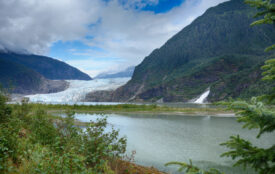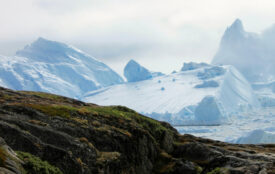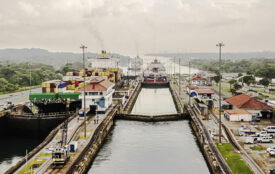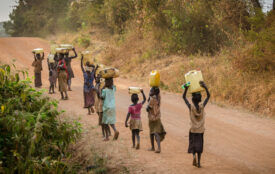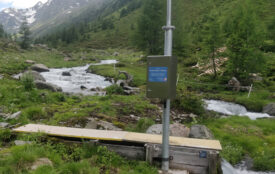Global report warns: Broken connections in nature threaten life on Earth
Rivers cut by dams, farmland expansion and urban growth are putting food, water, biodiversity and livelihoods at risk unless urgent action is taken.
Nearly one-third of the Earth’s land surface has already been profoundly transformed by human activity, leaving ecosystems degraded and fragmented, according to the Global Land Outlook Thematic Report on Ecological Connectivity and Land Restoration, launched at the International Union for Conservation of Nature (IUCN) World Conservation Congress in Abu Dhabi.
Produced by the United Nations Convention to Combat Desertification (UNCCD) and the Convention on the Conservation of Migratory Species of Wild Animals (CMS), the study shows that Earth’s landscapes are interconnected like a living mosaic, held together by the movement of species and the natural flow of water, nutrients and energy. But today these lifeline networks of rivers, forests and grasslands – are increasingly under threat, disrupting and diminishing the functioning of natural systems
The findings are stark: more than 60 per cent of the world’s rivers have been diverted or dammed. One striking example is the Mekong River: once the world’s most productive inland, fishery is now fragmented by dams, disrupting fish migrations and threatening the food security of millions. Another is the Serengeti–Mara, where fences and expanding agriculture are constricting the ancient migrations of wildebeest and other wildlife, jeopardizing one of the planet’s last great natural spectacles.
Roads, railways and cities continue to carve up habitats — leaving only small, isolated patches of nature behind. Globally, the road network is projected to expand by 60 per cent by 2050, putting even more pressure on ecosystems.
This loss of connectivity harms both nature and people alike. It weakens soil, shrinks harvests, worsens water shortages and leaves communities more exposed to droughts, floods and wildfires. Today, land degradation already affects up to 40 per cent of the planet, putting nearly half of humanity at risk. The way we grow food- combined with expanding infrastructure, pollution and climate change-is fragmenting landscapes and driving deforestation, biodiversity loss and breakdown in ecosystem functions.
UNCCD Executive Secretary Yasmine Fouad stressed the urgency of action: “Life on our planet depends on healthy land and water systems-not only for nature, but for people. When these ties are broken, it is the most vulnerable who suffer first. This report shows that restoring ecosystems also means restoring the links between them- we must ‘connect to restore and restore to connect”.
Healthy ecosystems are nature’s own infrastructure. They keep water flowing, protect communities from extreme weather and secure food and drinking supplies. When landscapes are restored at scale, they also lock away carbon, reduce disaster risks, protect biodiversity and create jobs.
Echoing this, CMS Executive Secretary Amy Fraenkel noted: “Conservation of the habitats that wild animals depend on is important for their survival, but it is not enough. Unless the ecological networks that wild animals rely on are restored and reconnected, migratory species of animals such as big cats, antelopes, freshwater fish and birds will continue to decline, with many species already critically endangered. These animals are integral parts of healthy, well-functioning ecosystems that nature and human communities rely on. Protecting these pathways is protecting our shared future.”
UNCCD Chief Scientist Barron Orr warned that delay is costly: “When soils are depleted and rivers polluted, recovery is slow and costly. Prevention and large-scale restoration are far more effective than waiting for collapse and then trying to repair it.”
Building on this warning, countries are urged to act. Ecological connectivity must be included in land, water and infrastructure planning.
Successful models already exist the European Green Belt stretches through 24 countries from northern Europe to the Balkans and the Mediterranean, forming one of the world’s largest ecological networks. In Costa Rica, a national system of wildlife corridors has reconnected forests, brought back species like jaguars and supported eco-tourism and local livelihoods. In Bolivia, Indigenous communities are restoring connectivity through traditional agroforestry practices, enriching biodiversity while improving incomes, showing how local knowledge and rights are central to resilience.
At the halfway point of the UN Decade on Ecosystem Restoration (2021–2030), leaders are reminded that land, biodiversity and climate goals can only be achieved by working together. This aligns with the Kunming-Montreal Global Biodiversity Framework, which calls for restoring 30 per cent of degraded ecosystems by 2030 and securing the integrity and connectivity of the world’s natural systems.
This is not only about saving nature-it is about repairing the web of life that people everywhere depend on.
- The Global Land Outlook Thematic Report on Ecological Connectivity and Land Restoration is available at: GLO Thematic Report on Ecological Connectivity and Land Restoration | UNCCD
Source
The United Nations Convention to Combat Desertification (UNCCD) 2025


